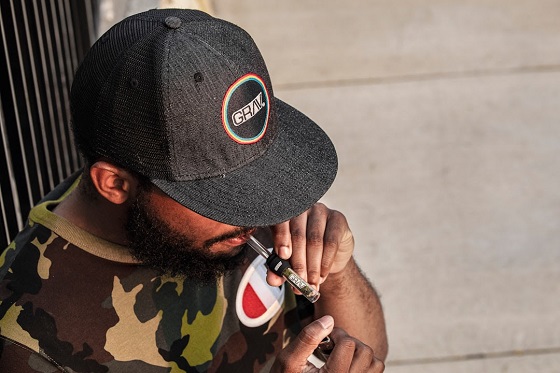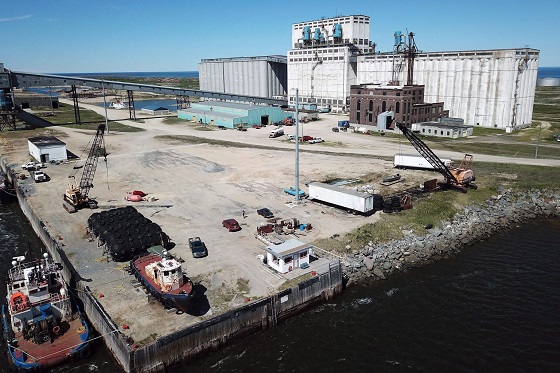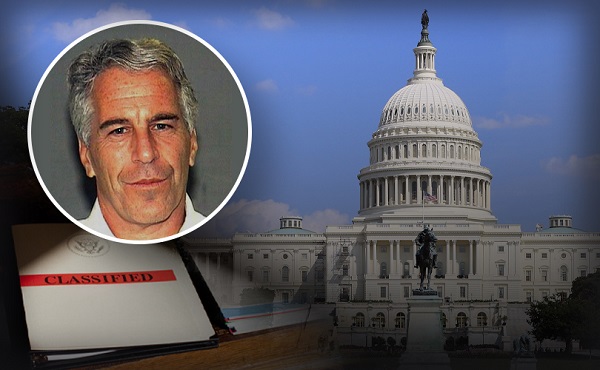Addictions
So What ARE We Supposed To Do With the Homeless?



David Clinton
Involuntary confinement is currently enjoying serious reconsideration
Sometimes a quick look is all it takes to convince me that a particular government initiative has gone off the rails. The federal government’s recent decision to shut down their electric vehicle subsidy program does feel like a vindication of my previous claim that subsidies don’t actually increase EV sales.
But no matter how hard I look at some other programs – and no matter how awful I think they are – coming up with better alternatives of my own isn’t at all straightforward. A case in point is contemporary strategies for managing urban homeless shelters. The problem is obvious: people suffering from mental illnesses, addictions, and poverty desperately need assistance with shelter and immediate care.
The Audit is a reader-supported publication. To receive new posts and support my work, consider becoming a free or paid subscriber.
Ideally, shelters should provide integration with local healthcare, social, and employment infrastructure to make it easier for clients to get back on their feet. But integration isn’t cost-free. Because many shelters serve people suffering from serious mental illnesses, neighbors have to worry about being subjected to dangerous and criminal behavior.
Apparently, City of Toronto policy now requires their staff to obscure from public view the purchase and preparation of new shelter locations. The obvious logic driving the policy is the desire to avoid push back from neighbors worried about the impact such a facility could have.
As much as we might regret the not-in-my-back-yard (NIMBY) attitude the city is trying to circumvent, the neighbors do have a point. Would I want to raise my children on a block littered with used syringes and regularly visited by high-as-a-kite – and often violent – substance abusers? Would I be excited about an overnight 25 percent drop in the value of my home? To be honest, I could easily see myself fighting fiercely to prevent such a facility opening anywhere near where I live.
On the other hand, we can’t very well abandon the homeless. They need a warm place to go along with access to resources necessary for moving ahead with their lives.
One alternative to dorm-like shelters where client concentration can amplify the negative impacts of disturbed behavior is “housing first” models. The goal is to provide clients with immediate and unconditional access to their own apartments regardless of health or behaviour warnings. The thinking is that other issues can only be properly addressed from the foundation of stable housing.
Such models have been tried in many places around the world over the years. Canada’s federal government, for example, ran their Housing First program between 2009 and 2013. That was replaced in 2014 with the Homelessness Partnering Strategy which, in 2019 was followed by Reaching Home.
There have been some successes, particularly in small communities. But one look at the disaster that is San Francisco will demonstrate that the model doesn’t scale well. The sad fact is that Canada’s emergency shelters are still as common as ever: serving as many as 11,000 people a night just in Toronto. Some individuals might have benefited from the Home First-type programs, but they haven’t had a measurable impact on the problem itself.
The Audit is a reader-supported publication. To receive new posts and support my work, consider becoming a free or paid subscriber.
Where does the money to cover those programs come from? According to their 2023 Financial Report, the City of Toronto spent $1.1 billion on social housing, of which $504 million came in funding transfers from other levels of government. Now we probably have to be careful to distinguish between a range of programs that could be included in those “social housing” figures. But it’s probably safe to assume that they included an awful lot of funding directed at the homeless.
So money is available, but is there another way to spend it that doesn’t involve harming residential neighborhoods?
To ask the question is to answer it. Why not create homeless shelters in non-residential areas?
Right off the top I’ll acknowledge that there’s no guarantee these ideas would work and they’re certainly not perfect. But we already know that the current system isn’t ideal and there’s no indication that it’s bringing us any closer to solving the underlying problems. So why not take a step back and at least talk about alternatives?
Good government is about finding a smart balance between bad options.
Put bluntly, by “non-residential neighborhood shelters” I mean “client warehouses”. That is, constructing or converting facilities in commercial, industrial, or rural areas for dorm-like housing. Naturally, there would be medical, social, and guidance resources available on-site, and frequent shuttle services back and forth to urban hubs.
If some of this sounds suspiciously like the forced institutionalization of people suffering from dangerous mental health conditions that existing until the 1970s, that’s not an accident. The terrible abuses that existed in some of those institutions were replaced by different kinds of suffering, not to mention growing street crime. But shutting down the institutions themselves didn’t solve anything. Involuntary confinement is currently enjoying serious reconsideration.
Clients would face some isolation and inconvenience, and the risk of institutional abuses can’t be ignored. But those could be outweighed by the positives. For one thing, a larger client population makes it possible to properly separate families and healthy individuals facing short-term poverty from the mentally ill or abusive. It would also allow for more resource concentration than community-based models. That might mean dedicated law enforcement and medical staff rather than reliance on the 9-1-1 system.
It would also be possible to build positive pathways into the system, so making good progress in the rural facility could earn clients the right to move to in-town transition locations.
This won’t be the last word spoken on this topic. But we’re living with a system that’s clearly failing to properly serve both the homeless and people living around them. It would be hard to justify ignoring alternatives.
The Audit is a reader-supported publication. To receive new posts and support my work, consider becoming a free or paid subscriber.
Addictions
Activists Claim Dealers Can Fix Canada’s Drug Problem

By Adam Zivo
We should learn from misguided experiments with activist-driven drug ideologies.
Some Canadian public-health researchers have argued that the nation’s drug dealers, far from being a public scourge, are central to the cause of “harm reduction,” and that drug criminalization makes it harder for them to provide this much-needed “mutual aid.” Incredibly, these ideas have gained traction among Canada’s policymakers, and some have even been put into practice.
Gillian Kolla, an influential harm-reduction activist and researcher, spearheaded the push to whitewash drug trafficking in Canada. Over the past decade, she has advocated for many of the country’s failed laissez-faire drug policies. In her 2020 doctoral dissertation, she described her hands-on research into Toronto’s “harm reduction satellite sites”—government-funded programs that paid drug users to provide services out of their homes.
The sites Kolla studied were operated by the nonprofit South Riverdale Community Health Centre (SRCHC) in Toronto. Addicts participating in the programs received $250 per month in exchange for distributing naloxone and clean paraphernalia (needles and crack pipes, for example), as well as for reversing overdoses and educating acquaintances on safer consumption practices. At the time of Kolla’s research (2016–2017), the SRCHC was operating nine satellite sites, which reportedly distributed about 1,500 needles and syringes per month.
Canada permits supervised consumption sites—facilities where people can use drugs under staff oversight—to operate so long as they receive an official exemption via the federal Controlled Drugs and Substances Act. As the sites Kolla observed did not receive exemptions, they were certainly illegal. Kolla herself acknowledged this in her dissertation, writing that she, with the approval of the University of Toronto, never recorded real names or locations in her field notes, in case law enforcement subpoenaed her research data.
Even so, the program seems to have enjoyed the blessing of Toronto’s public health officials and police. The satellite sites received local funding from 2010 onward, after a decade of operating on a volunteer basis, apparently with special protection from law enforcement. In her dissertation, Kolla described how SRCHC staff trained police officers to leave their sites alone, and how satellite-site workers received special ID badges and plaques to ward off arrest.
Kolla made it clear that many of these workers were not just addicts but dealers, too, and that tolerance of drug trafficking was a “key feature” of the satellite sites. She even described, in detail, how she observed one of the site workers packaging and selling heroin alongside crackpipes and needles.
In her dissertation, Kolla advocated expanding this permissive approach. She claimed that traffickers practice harm reduction by procuring high-quality drugs for their customers and avoiding selling doses that are too strong.
“Negative framings of drug selling as predatory and inherently lacking in care make it difficult to perceive the wide variety of acts of mutual aid and care that surround drug buying and selling as practices of care,” she wrote.
In truth, dealers routinely sell customers tainted or overly potent drugs. Anyone who works in the addiction field can testify that this is a major reason that overdose deaths are so common.
Ultimately, Kolla argued that “real harm reduction” should involve drug traffickers, and that criminalization creates “tremendous barriers” to this goal.
The same year she published her dissertation, Kolla cowrote a paper in the Harm Reduction Journal with her Ph.D. supervisor at the Dalla Lana School of Public Health. The article affirmed the view that drug traffickers are essential to the harm-reduction movement. Around this time, the SRCHC collaborated with the Toronto-based Parkdale Queen West Community Health Centre— the only other organization running such sites—to produce guidelines on how to replicate and scale up the experiment.
Thankfully, despite its local adoption, this idea did not catch on at the national level. It was among the few areas in the early 2020s where Canada did not fully descend into addiction-enabling madness. Yet, like-minded researchers still echo Kolla’s work.
In 2024, for example, a group of American harm-reduction advocates published a paper in Drug and Alcohol Dependence Reports that concluded, based on just six interviews with drug traffickers in Indianapolis, that dealers are “uniquely positioned” to provide harm-reduction services, partly because they are motivated by “the moral imperative to provide mutual aid.” Among other things, the authors argued that drug criminalization is harmful because it removes dealers from their social networks and prevents them from enacting “community-based practices of ethics and care.”
It’s instructive to review what ultimately happened with the originators of this movement—Kolla and the SRCHC. Having failed to whitewash drug trafficking, Kolla moved on to advocating for “safer supply”—an experimental strategy that provides addicts with free recreational drugs to dissuade use of riskier street substances. The Canadian government funded and expanded safer supply, thanks in large part to Kolla’s academic work. It abandoned the experiment after news broke that addicts resell their safer supply on the black market to buy illicit fentanyl, flooding communities with diverted opioids and fueling addiction.
The SRCHC was similarly discredited after a young mother, Karolina Huebner-Makurat, was shot and killed near the organization’s supervised consumption site in 2023. Subsequent media reports revealed that the organization had effectively ignored community complaints about public safety, and that staff had welcomed, and even supported, drug traffickers. One of the SRCHC’s harm-reduction workers was eventually convicted of helping Huebner-Makurat’s shooter evade capture by hiding him from the police in an Airbnb apartment and lying to the police.
There is no need for policymakers to repeat these mistakes, or to embrace its dysfunctional, activist-driven drug ideologies. Let this be another case study of why harm-reduction policies should be treated with extreme skepticism.
Our content is always free
If you want to help us commission more high-quality journalism,
consider getting a voluntary paid subscription.
Addictions
Canadian gov’t not stopping drug injection sites from being set up near schools, daycares

From LifeSiteNews
Canada’s health department told MPs there is not a minimum distance requirement between safe consumption sites and schools, daycares or playgrounds.
So-called “safe” drug injection sites do not require a minimum distance from schools, daycares, or even playgrounds, Health Canada has stated, and that has puzzled some MPs.
Canadian Health Minister Marjorie Michel recently told MPs that it was not up to the federal government to make rules around where drug use sites could be located.
“Health Canada does not set a minimum distance requirement between safe consumption sites and nearby locations such as schools, daycares or playgrounds,” the health department wrote in a submission to the House of Commons health committee.
“Nor does the department collect or maintain a comprehensive list of addresses for these facilities in Canada.”
Records show that there are 31 such “safe” injection sites allowed under the Controlled Drugs And Substances Act in six Canadian provinces. There are 13 are in Ontario, five each in Alberta, Quebec, and British Columbia, and two in Saskatchewan and one in Nova Scotia.
The department noted, as per Blacklock’s Reporter, that it considers the location of each site before approving it, including “expressions of community support or opposition.”
Michel had earlier told the committee that it was not her job to decide where such sites are located, saying, “This does not fall directly under my responsibility.”
Conservative MP Dan Mazier had asked for limits on where such “safe” injection drug sites would be placed, asking Michel in a recent committee meeting, “Do you personally review the applications before they’re approved?”
Michel said that “(a)pplications are reviewed by the department.”
Mazier stated, “Are you aware your department is approving supervised consumption sites next to daycares, schools and playgrounds?”
Michel said, “Supervised consumption sites were created to prevent overdose deaths.”
Mazier continued to press Michel, asking her how many “supervised consumption sites approved by your department are next to daycares.”
“I couldn’t tell you exactly how many,” Michel replied.
Mazier was mum on whether or not her department would commit to not approving such sites near schools, playgrounds, or daycares.
An injection site in Montreal, which opened in 2024, is located close to a kindergarten playground.
Conservative Party leader Pierre Poilievre has called such sites “drug dens” and has blasted them as not being “safe” and “disasters.”
Records show that the Liberal government has spent approximately $820 million from 2017 to 2022 on its Canadian Drugs and Substances Strategy. However, even Canada’s own Department of Health admitted in a 2023 report that the Liberals’ drug program only had “minimal” results.
Recently, LifeSiteNews reported that the British Columbia government decided to stop a so-called “safe supply” free drug program in light of a report revealing many of the hard drugs distributed via pharmacies were resold on the black market.
British Columbia Premier David Eby recently admitted that allowing the decriminalization of hard drugs in British Columbia via a federal pilot program was a mistake.
Former Prime Minister Justin Trudeau’s loose drug initiatives were deemed such a disaster in British Columbia that Eby’s government asked Trudeau to re-criminalize narcotic use in public spaces, a request that was granted.
Official figures show that overdoses went up during the decriminalization trial, with 3,313 deaths over 15 months, compared with 2,843 in the same time frame before drugs were temporarily legalized.
-

 Carbon Tax6 hours ago
Carbon Tax6 hours agoCarney fails to undo Trudeau’s devastating energy policies
-

 Business2 days ago
Business2 days agoNew airline compensation rules could threaten regional travel and push up ticket prices
-

 Business2 days ago
Business2 days agoWill the Port of Churchill ever cease to be a dream?
-

 Censorship Industrial Complex2 days ago
Censorship Industrial Complex2 days agoMove over Soviet Russia: UK Police Make 10,000 Arrests Over “Offensive” Online Speech
-

 Digital ID2 days ago
Digital ID2 days agoRoblox to Mandate Facial and ID Verification
-

 Business2 hours ago
Business2 hours agoBudget 2025: Ottawa Fakes a Pivot and Still Spends Like Trudeau
-

 Business2 days ago
Business2 days agoThe numbers Canada uses to set policy don’t add up
-

 armed forces12 hours ago
armed forces12 hours agoCanada At Risk Of Losing Control Of Its Northern Territories









